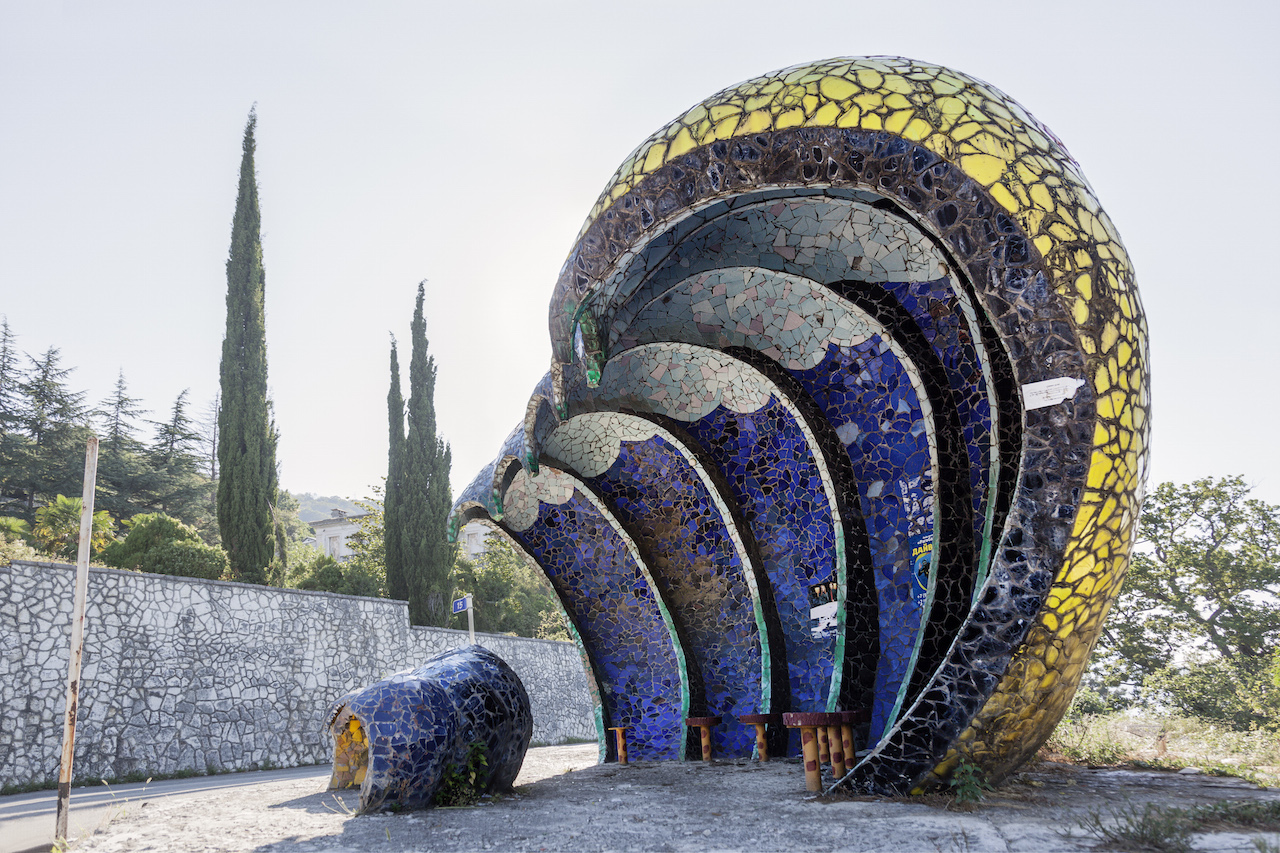Photographer Christopher Herwig has an impressive resume. He’s bounced around the globe during his 20-year career, based in locations such as London, Stockholm, Vancouver and New York. His client list is impressive as well; he’s worked for CNN, Lonely Planet, BBC, and most recently the United Nations.
The scope of his personal work is no less ambitious. If you told us that there was a photographer who published a book of Soviet-era bus stops, we would have raised an eyebrow. Now that we’ve seen one such image for ourselves, we can’t wait to see the rest.
The above photograph was shot in Garga, in the disputed region of Abkhazia. It’s rendered in bright mosaic across curving layers that are nested within each other. It’s made all the more arresting by how neglected it appears. Although this is the only ceramic photograph we’ve seen in the series it’s similar to many of the other stops that are also deftly-executed and yet corrupted by decay. They are strange artifacts, indeed.
Herwig recalled one conversation he had with an architect who designed 100 bus stops. Armen Sardarov’s quote reminds us that the regime change was so complete that not even the bus stops escaped it. Little details such as this create a clearer picture of history than a broader handling ever could.
“Totalitarian regime, yes, it is bad and so on,” Sardarov told Herwig, “But for all that, there sprang up some sprouts of a real culture. Now [the stops] are mostly killed by mass culture because mass culture is a commercial culture.”
Love contemporary ceramic art + design? Let us know in the comments.


I maybe splitting hairs here but the a bus stop may well be considered an artifact of mass culture, while mass culture is not always commercial culture.